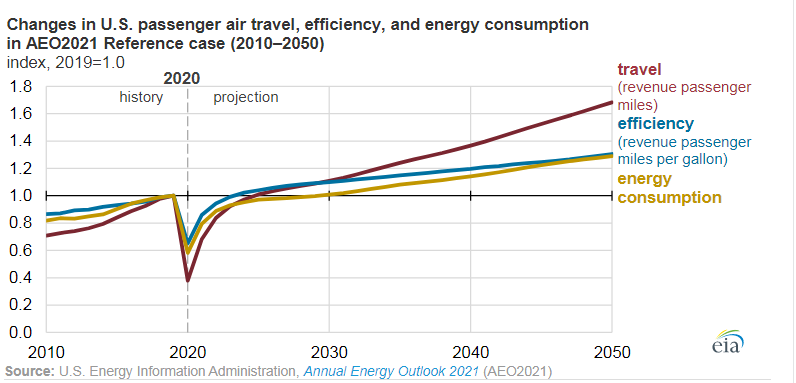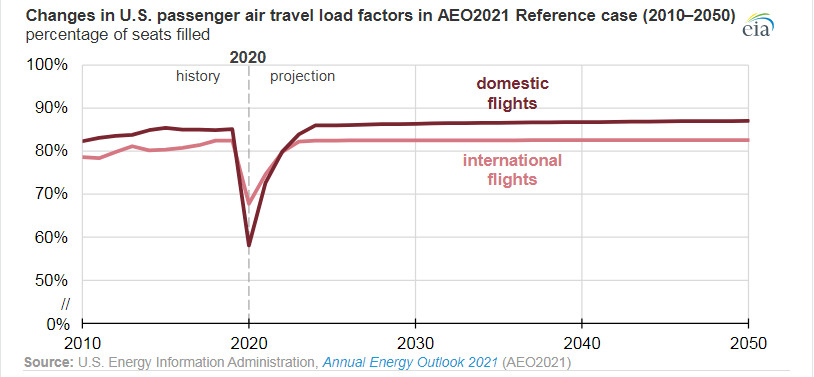EIA projects U.S. jet fuel consumption won’t increase as quickly as air travel demand

U.S. air travel fell significantly in 2020 because of reduced travel in response to the worldwide COVID-19 pandemic. In its Annual Energy Outlook 2021 (AEO2021) Reference case, the U.S. Energy Information Administration (EIA) projects total U.S. passenger air travel demand will return to 2019 levels by 2025, but passenger travel jet fuel consumption will not return to 2019 levels until nearly 2030. Increasing air travel efficiency means that increasing air travel does not necessarily result in similar changes in jet fuel consumption.
The energy efficiency of passenger air travel depends on both operational efficiency (how many passengers, as opposed to empty seats, are on a flight) as well as aircraft fuel efficiency. In 2019, 85% of the seats on domestic flights and 83% of seats on international flights were filled, according to U.S. Bureau of Transportation Statistics data. In 2020, those percentages—known as load factors—fell because of mismatches in seat supply and demand as well as some airlines’ seating restrictions to allow passengers to distance from each other. EIA projects that load factors will increase in the near term as airlines adjust their capacity to more closely align with demand and as they remove seating restrictions.

In 2020, many planes—primarily older planes—went unused for much of the year. These planes may not return to service because of their age or because they were converted to dedicated freighters to offset the loss in passenger aircraft belly freight capacity. EIA projects that newer, more efficient aircraft will replace these retired and converted aircraft, further accelerating improvement in passenger aircraft efficiency. Passenger travel accounted for an estimated 87% of U.S. commercial jet fuel consumption in 2019 and 83% of commercial jet fuel consumption in 2020.
You can return to the main Market News page, or press the Back button on your browser.

